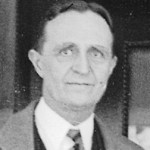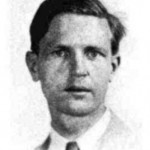Is time spent on arithmetic during grades 3, 4 and 5 wasted?
Posted by: Gary Ernest Davis on: April 4, 2011
The answer depends on what we mean by “arithmetic”.
If we mean learning algorithms for addition, subtraction, multiplication and division, and sundry other taught methods, then the answer seems to be yes.
If we mean working on sensible and real arithmetic problems – not make believe problems – then the answer seems to be no: time spent on arithmetic is not wasted, but is productive.
This issue was addressed quite a long time ago, by Louis Benezet, a Superintendent of schools in New Hamsphire.
Benezet decided to abandon taught algorithms before grade 7 and focussed instead on reasoning about real-world problems.
Here is a typical problem Louis Benezet would set for children, without teaching algorithms:
“Â The distance from Boston to Portland by water is 120 miles. Three steamers leave Boston, simultaneously, for Portland. One makes the trip in 10 hours, one in 12, and one in 15. How long will it be before all 3 reach Portland?”
6 out of 29 traditionally taught 9th-grade students in Manchester, New Hampshire,  gave a correct answer. By way of contrast, Benezet’s experimental 2nd grade had an almost perfect score.
Andrew Gleason, formerly Hollis Professor of Mathematicks and Natural Philosophy at Harvard University, wrote, in relation to Louis Benezet’s findings :
“I shall argue that the teaching of arithmetic algorithms (beyond one significant figure) should be postponed. For how long? I suggest until grade six, but this choice is only to give a rough indication of what I have in mind. …Â If we defer arithmetic instruction, what should we do instead? Benezet certainly had the right idea. Expose the children to situations involving mathematical ideas, insist that they learn to think clearly about these ideas, and avoid forcing them to carry out aversive calculations. I suggest that the set of mathematical ideas to be brought to children’s attention should be enlarged considerably to conform to the needs of present-day society, but otherwise we should follow his blue-print closely.
Such a major change in the curriculum would have to be accompanied by a major change in the style of teaching. I suspect that many grade-school teachers, uneasy themselves with mathematical ideas, take refuge in the simple right-wrong dichotomy and thereby avoid any serious effort to get students to think mathematically. A curriculum with little emphasis on precise calculation would force the teaching of ideas and the careful expression thereof. The required change in teaching style might easily prove to be the principal difficulty in making the change in the curriculum.”
Hassler Whitney, formerly Professor of Mathematics at the Institute for Advanced Study, Princeton University, and recipient of the National Medal of Science, 1976, the Wolf Prize, Wolf Foundation, 1983, a Steele Prize in 1985, and  member of the National Academy of Science, was a supporter of Louis Benezet’s focus on sense-making in preference  to taught algorithms.
Whitney recalled a mid 1980’s test given by the National Assessment of Educational Progress:
John and Lewis are planning a rectangular garden 10 feet long and 6 feet wide, and they want to put a fence around it. Ignoring such real matters as the need for a gate, the question was simply how many feet of fencing was needed.
9% of the 9-year-olds who took the test  said 32 feet; 59% said 16 feet; 14% said 60 feet, and 18% gave other answers. 31% of the 13-year-olds taking the test said 32 feet; 38% said 16 feet; and 21% said 60 feet.
Whitney asked” ”Why did not all the children get the correct answer? If they were involved in it as a real problem they could have drawn a picture or made it real in some way, and looked to find the answer.” Instead they did it ”the school way,” guessing at what kind of ”operation” to use – multiplying or adding the numbers.” (Fred M. HEechinger, June 10, 1986,About Education; Learning math by thinking, New York Times)
Luois Benezet emphasized sense-making and reasoning over rote application of taught algorithms.
His methods were widely recognized at the time, 1935-1936, but have now largely been abandoned.
What could cause the abandonment of such a sensible and succesful approach to teaching children how to engage in mathematical reasoning and thinking?
Maybe World war II?
Louis Benezet’s published work on his study
Louis_Benezet_Teaching_of_Arithmetic
Acknowledgments
Thanks to Sanjoy Mahajan, now at MIT, for setting up the Benezet Centre website, and to the Cavendish Laboratory, Cambridge University, for maintaining the site.





April 4, 2011 at 10:15 am
The culprit was almost certainly not the war, but the rigidity of the educational establishment. In the 1930s Harold F. Fawcett ( http://www.cut-the-knot.org/ctk/NecessaryAndSufficient.shtml ) ran an unorthodox geometry course at the Ohio State University Progressive School which was continued by Eugene Smith from 1945 to 1956 – and then what? Frederick Flener gives an account of his investigation: http://www.cut-the-knot.org/ctk/NatureOfProof.shtml
April 4, 2011 at 10:17 am
BTW, I mentioned Fawcett and Benezet’s experiments in an 2008 blog: http://www.mathteacherctk.com/blog/2008/02/reformists-pay-attention/
April 4, 2011 at 10:59 am
Thanks Alex. Association not cause I guess.